Outerwear should give you the power to live boldly. That’s the mission of Mountain Hardwear. It’s a brand synonymous with outdoor adventure, whether you’re hiking at the weekend or going on a once-in-a-lifetime ski trip.
Mountain Hardwear is a brand where performance meets function-focused design. You’ll find the highest-quality materials and the latest technologies incorporated into each Mountain Hardwear design.
We’re sharing everything you need to know about the brand and how to spot fake Mountain Hardwear clothing and jackets.
Exploring the Origins of Mountain Hardwear: A Tale of Innovation and Adventure
Mountain Hardwear is the brainchild of a group of outdoor industry iconoclasts. It was founded in 1993 when the group spotted a gap in the industry as it began to compromise quality in the name of contemporary trends.
Mountain Hardwear was launched as a premium outerwear brand for outdoor athletes and adventurers alike.
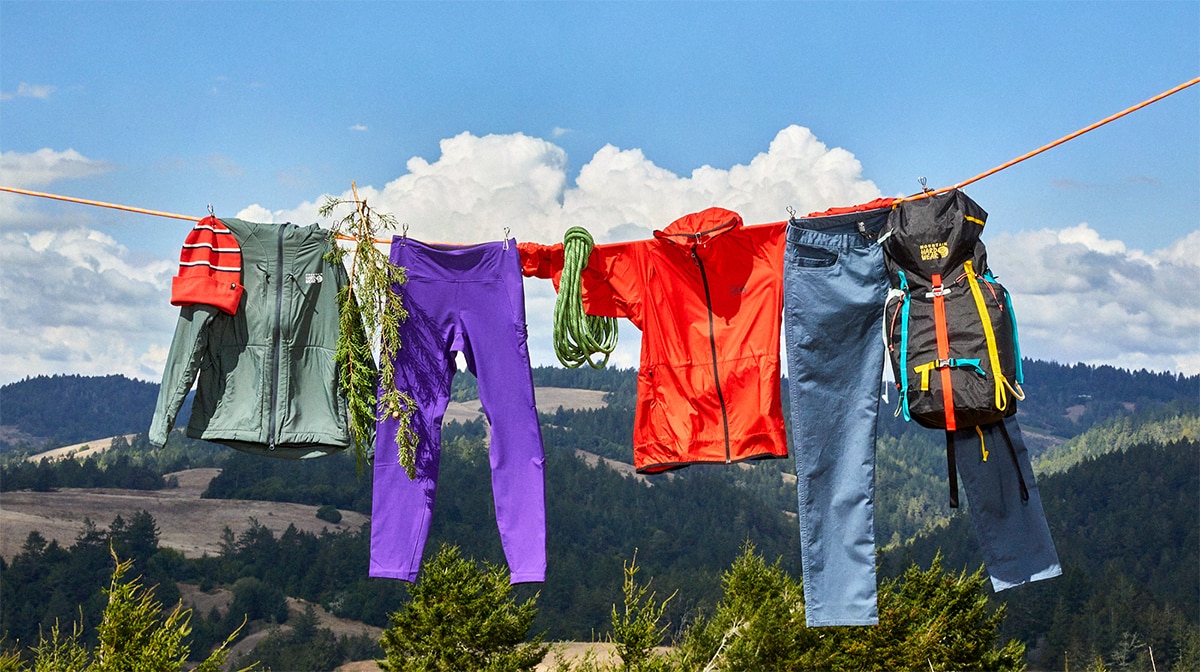
The brand is now a subsidiary of Columbia Sportswear, America’s leading outdoor lifestyle brand. Mountain Hardwear has built a reputation for performance with purposefully designed outerwear that uses the highest quality materials and technologies.
You’ll find weather protection, moisture management, and temperature regulation incorporated in the most popular Mountain Hardwear jackets. The brand is committed to creating a better physical experience for outdoor adventurers.
Mountain Hardwear is an official sponsor for dozens of athletes, particularly climbers, skiers, and alpinists.
Global Craftsmanship: Discovering the Production Roots of Mountain Hardwear Apparel
Although Mountain Hardwear is an American brand, its clothing is not made in the USA. Most Mountain Hardwear clothes are made in Asia, particularly in China and Vietnam.
Its clothing and jackets are made in the factories owned by Mountain Hardwear’s parent company, Columbia Sportswear.
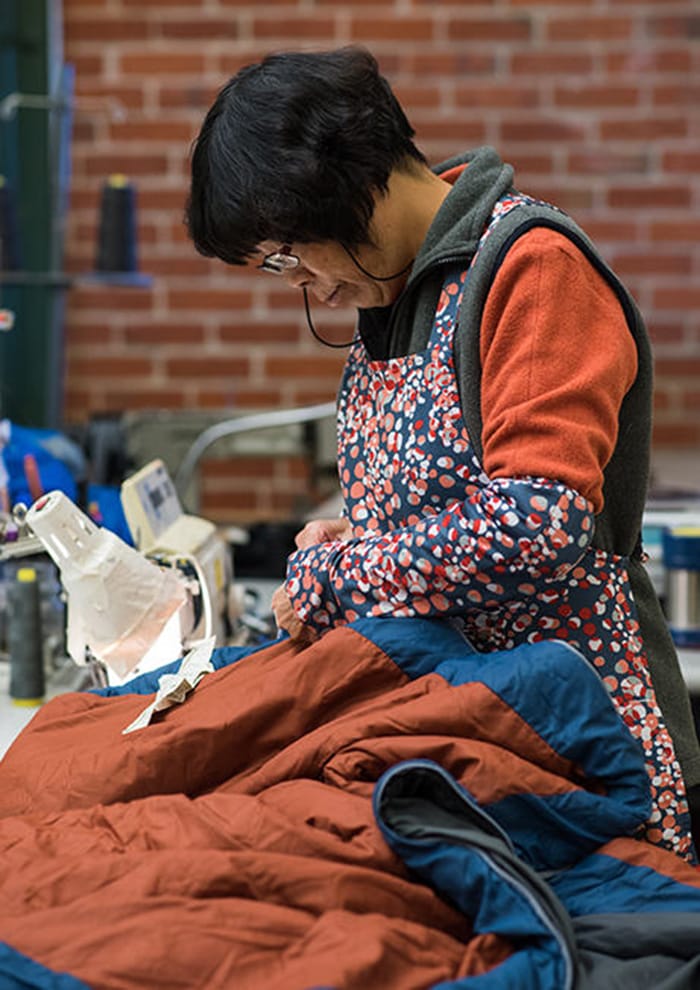
Only 10 of Columbia Sportswear’s factories are in the United States, which is roughly 3% of its total facilities. Most of the production is carried out in China, Vietnam, India, and Indonesia.
You can use Columbia Sportswear’s transparency feature on its website to match the ID number of your label. It’ll show you where your Mountain Hardwear jacket was made in.
Braving the Cold: Assessing the Warmth and Comfort of Mountain Hardwear Attire
It’s hard to pinpoint exactly how warm Mountain Hardwear clothes are. A lot of it relies on your body temperature.
Some people are naturally colder than others, depending on your circulation and core warmth. Most people take some trial and error to find the right jacket. Mountain Hardwear clothes are warm. They’re designed with sub-zero temperatures and extreme winter sports in mind.
Performance is what matters when considering how warm outdoor clothing is. Fabric technology can give you insulation and breathability.
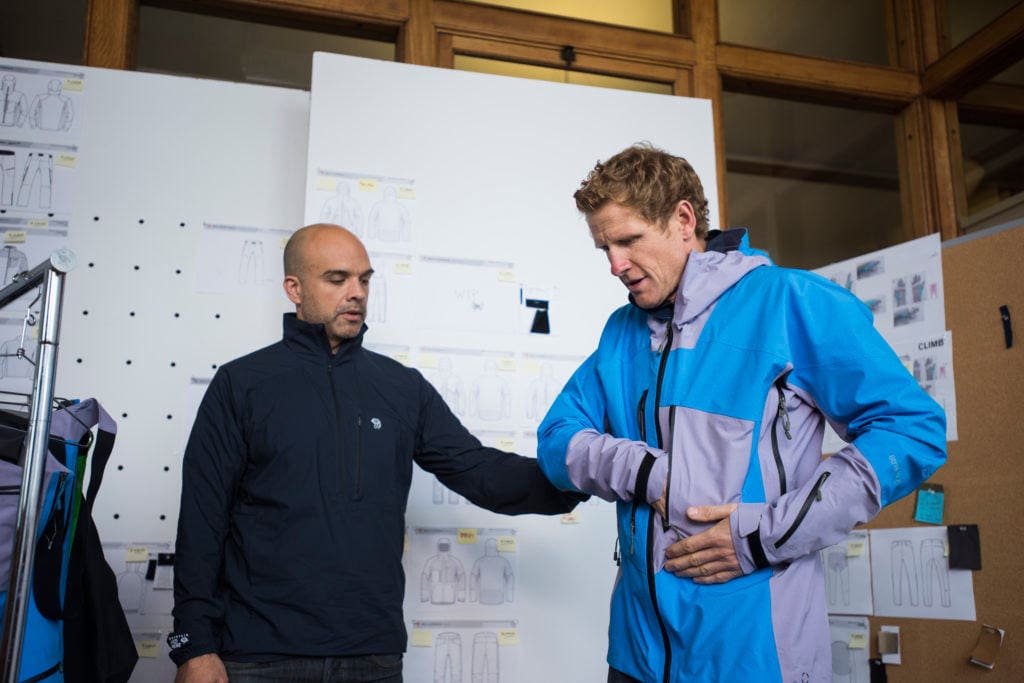
Mountain Hardwear offers two advanced warmth fabrics: Primaloft and Polartec fleece. Primaloft was originally designed for the U.S. Army as a water-resilient alternative to the down that is traditionally used.
This synthetic insulation has been globally recognized as an industry leader and guarantees you’ll stay warm all day long.
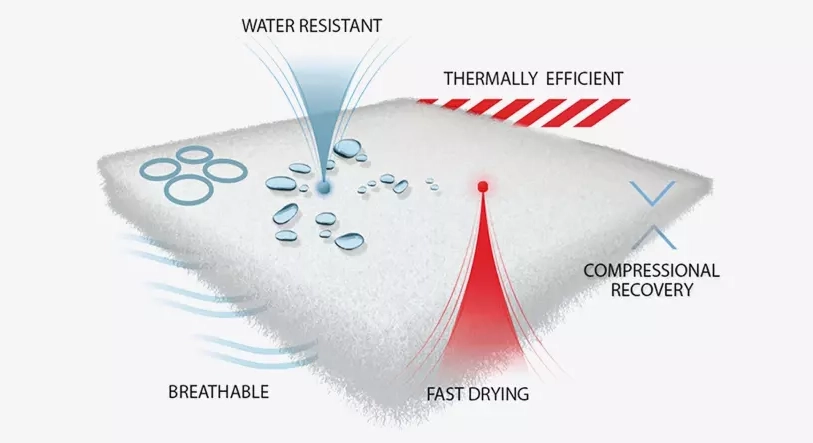
Polartec fleece is Mountain Hardwear’s other leading warmth technology. It’s the first type that blends nap, shear synthetic yarns and knit to provide long-lasting versatility.
It’s a premium polyester yarn that repels moisture with speedy drying. You’ll get optimal breathability while retaining warmth.

Care and Maintenance: A Guide to Preserving Your Mountain Hardwear Gear
An outdoor jacket is an investment in your closet. You can enjoy wearing it for years by giving it a little TLC along the way.
Mountain Hardwear offers extensive care instructions on its website. We’re recapping how to look after your Mountain Hardwear jackets every day.
Mountain Hardwear Down Jackets
There are specific washing and care instructions for Mountain Hardwear down jackets.
These jackets can be machine-washed if you zip up the zippers, attach the Velcro, and turn the jacket inside out. Ensure that your washer is in a gentle setting using cold water.
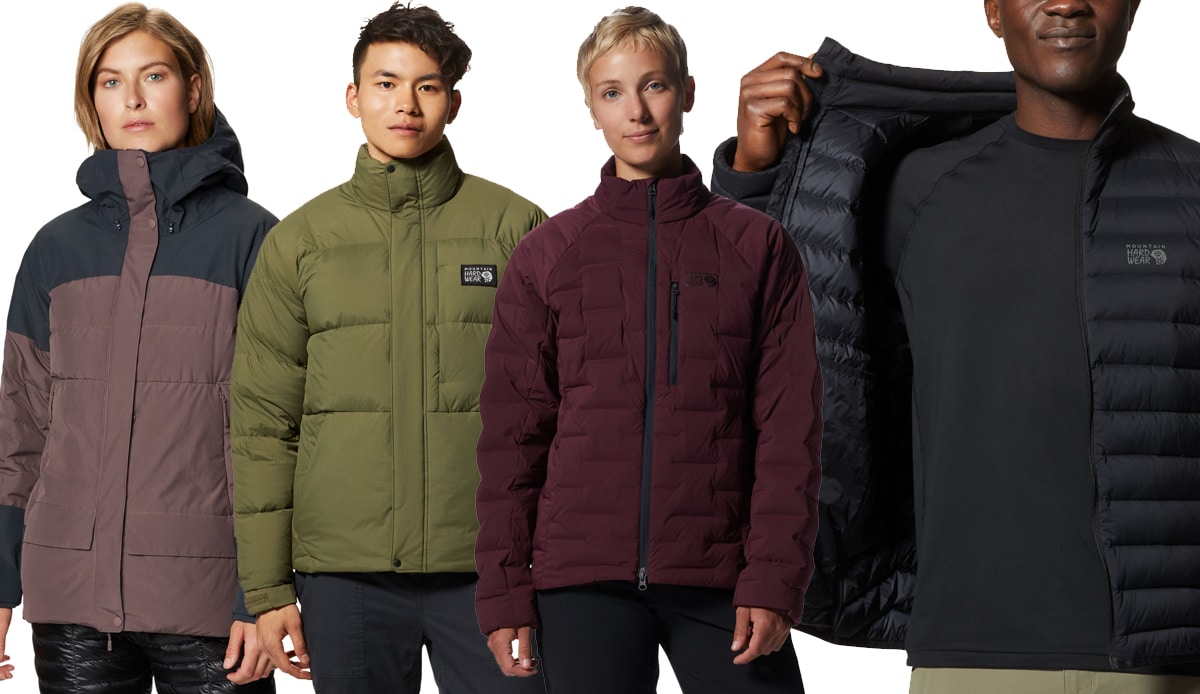
Keep your product usage to a minimum and invest in a washing liquid specially formulated for outdoor clothing. It’s best to keep your jacket in for two rinse cycles to remove the soap.
Be careful taking your Mountain Hardwear jacket out of the washer. Carry it from the bottom and use a tumble dryer on low heat. The jacket should have enough space to move freely.
You may need to dry your jacket separately from other garments. Stop your cycle mid-spin to shake the jacket and remove any wet clumps.
Mountain Hardwear Soft Shell Jackets
Not all Mountain Hardwear jackets can be washed the same way. Soft-shell jackets have durable water-repellent fabric that needs extra care. Avoid grease, oil, and fragrance getting on your jacket.
You can machine wash your soft-shell Mountain Hardwear jacket using a regular laundry detergent and cold or lukewarm water. Skip fabric softener and put your jacket into two cycles to ensure the detergent is fully out of your material.
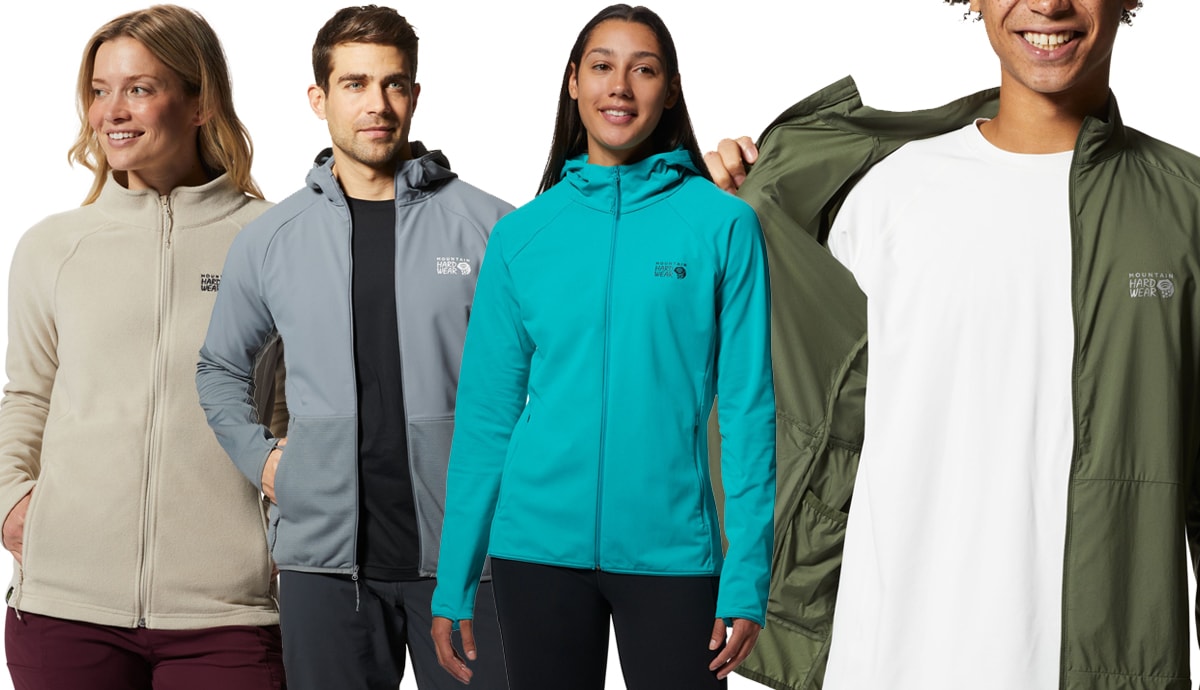
Tumble dry your soft-shell jacket on low heat or dry it outside to ensure it maintains its shape. Mountain Hardwear recommends that you re-treat your soft-shell jacket at the beginning of autumn or winter to maintain its condition. If you’re regularly washing your soft-shell jacket, it’s worth re-treating every few months.
Mountain Hardwear and other outdoor retailers offer wash-in and spray-on products that you can use to maintain the water-repellent features of your jacket. The brand recommends that you use ReviveX wash-in products for its soft-shell jacket.
Authenticity Unveiled: Spotting Genuine Mountain Hardwear Apparel
Fake Mountain Hardwear clothing can look good from far away but fail to meet expectations upon closer inspection. The best way to identify Mountain Hardwear clothing is by looking at the finer details.
1. Closely examine the stitching to look for inconsistency. Although Mountain Hardwear jackets are made primarily in Asia, the brand is known for its high-quality production.
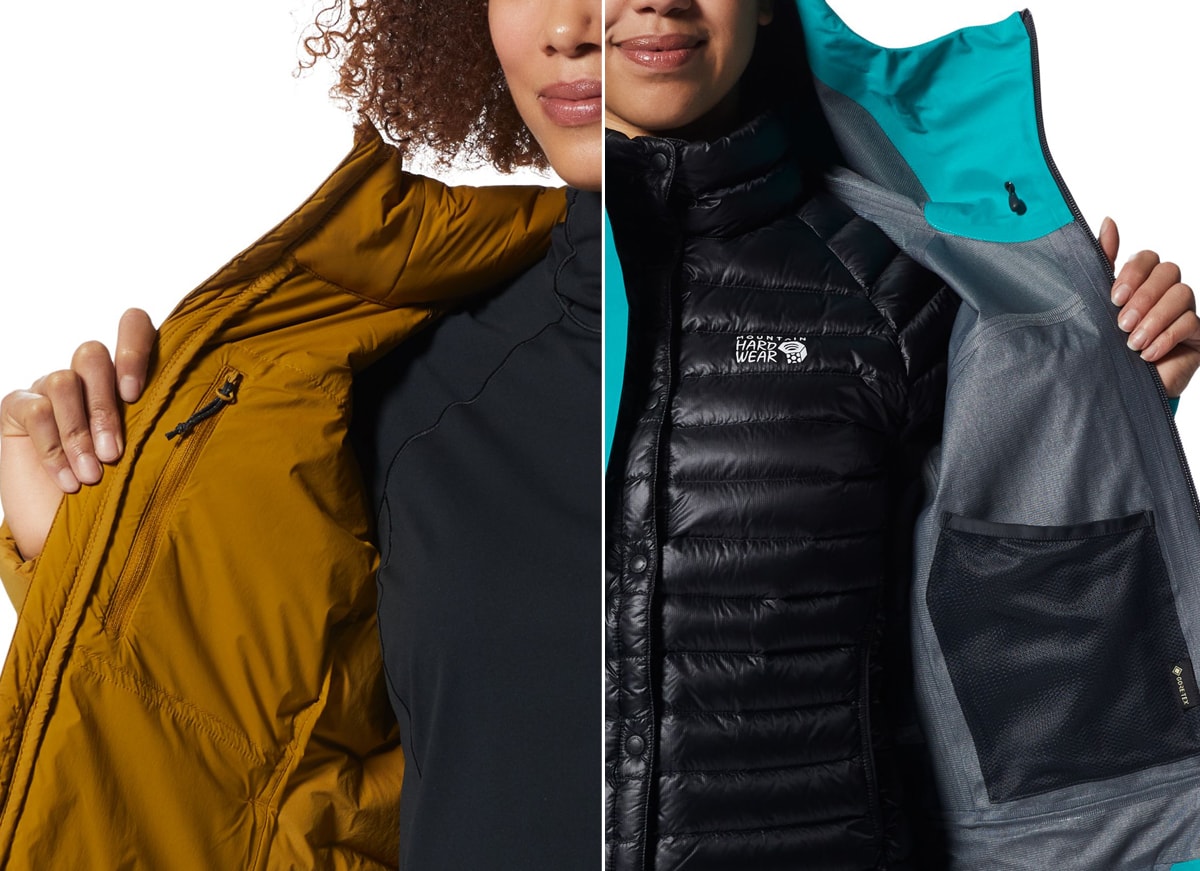
2. One of the easiest ways to identify Mountain Hardwear clothing is by looking at the labels. You should find a style ID number and a factory number correlating with one of Columbia’s factories.
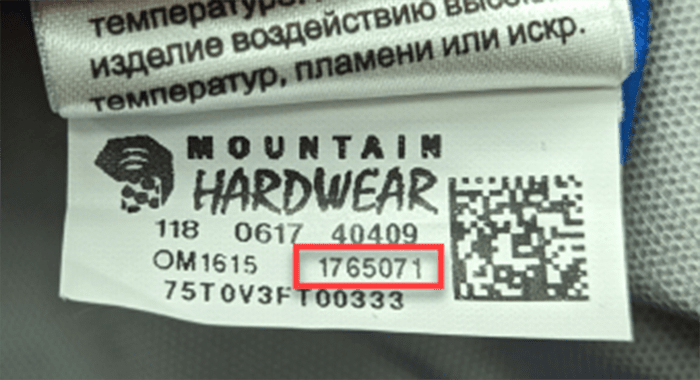
3. If purchasing a Mountain Hardwear jacket online, check that you’re shopping from an official stockist. The brand has stated that several fake websites online claim to sell authentic Mountain Hardwear clothes that they are working to shut down.
It’s best to purchase directly from Mountain Hardwear’s official website or an authorized stockist like REI or Backcountry.
Elevate your closet with a Mountain Hardwear jacket that will keep you warm, whatever the weather. Use these tips and tricks to find a Mountain Hardwear jacket for your next outdoor adventure.
